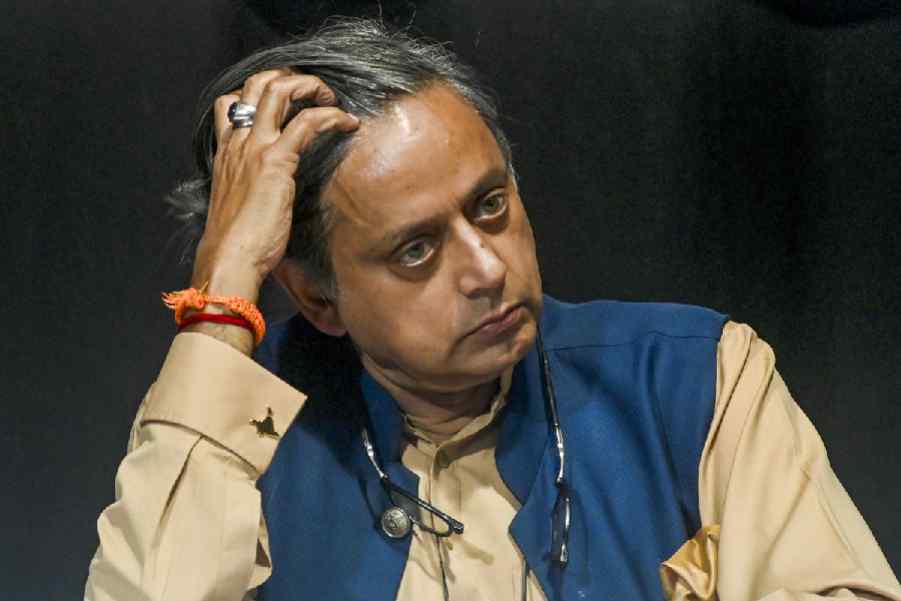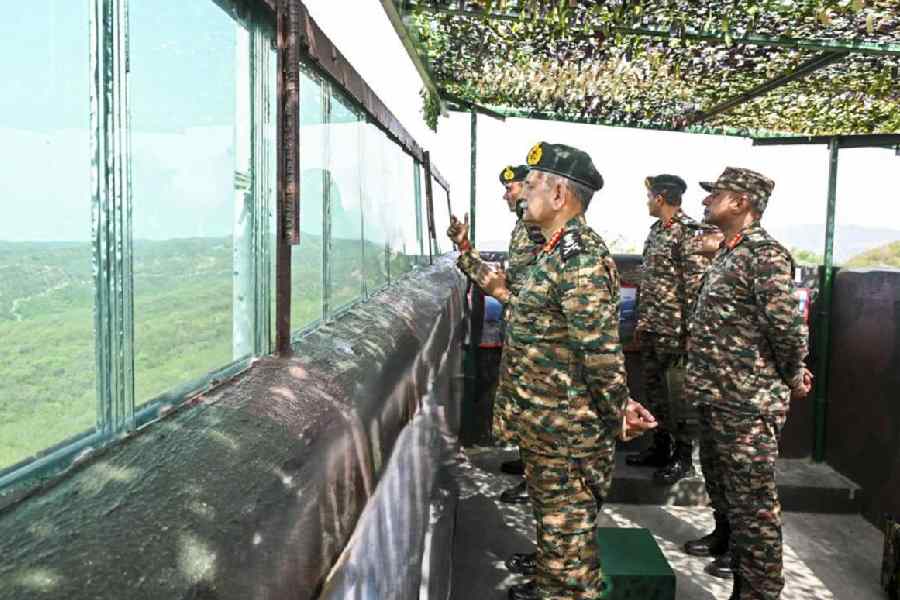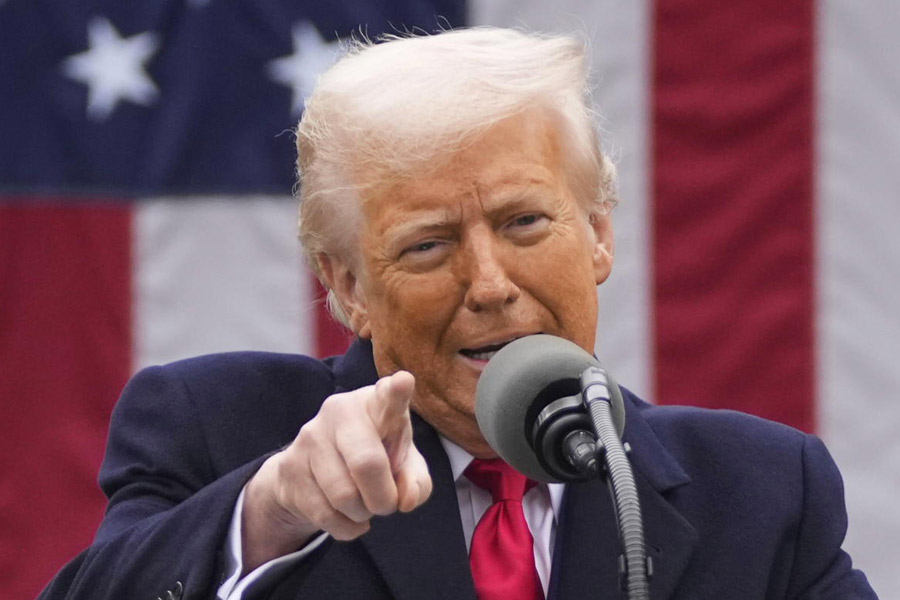 |
| The scene during a Left-sponsored bandh in 1992 when Basu was chief minister |
The photograph was as stark as it was frightening: the head was swathed in a heavy bandage, wound from the top of the head and round the chin. But the eyes were fierce, almost defiant.
The caption beneath the photograph was almost cheeky. It simply read: Luther — A tough nut to crack. It sounded facetious because Luther’s skull had almost been cracked but he wasn’t going to be cowed.
The era: the 1980s. And the man in question was P.C. Luther, then chairman and managing director of state-owned Damodar Valley Corporation.
Luther was a something of a martinet and he wasn’t going to allow workers at the power utility to flake off — a human failing that was fast turning into an assertive right under a red banner that bore the hammer and the sickle. When Luther tried to do something about it, he was beaten badly inside his office by a truculent group of trade union leaders.
The facetious caption encapsulated the story in the weekend edition of Business Standard. The Luther episode showed the ugly face of militant trade unionism in Bengal: it was the first incident where a chief executive of a major corporation had been battered by a band of unionists.
The story would play out several times in the state over the next two decades — with disastrous consequences for the state.
Chief minister Jyoti Basu clucked his tongue over these incidents but did little to restrain the marauding mobs. With their top managers beaten, intimidated and humiliated, companies that had established their headquarters in Bengal would have no choice but to scurry out of the state.
This is the most enduring bit of Basu’s chequered legacy: by failing to rein in the belligerent trade union leaders early in his reign, he found that he couldn’t exercise control over the anarchy that inevitably followed.
Bengal soon sank into a morass, turning into an industrial wasteland of lost opportunities with an ever-shrinking pool of jobs. It coloured perceptions about Bengal and created deep-seated prejudices against the state that it is still fighting against.
Basu’s initial reaction to the exodus was one of imperious disdain: they were after all private companies, seeking to relocate in other states to grab the lollies that the other chief ministers were offering in an early era of competitive blandishments. He wasn’t going to get into that scrum.
Basu’s political persuasion pointed him in a different direction: he wanted to nationalise the faltering corporations that had subsisted for long on cash handouts and orders from the state and central governments through which they exercised a modicum of managerial control over these entities.
 |
| Former DVC chief PC Luther, who was attacked |
The clamour for nationalisation of a large swathe of semi- government run corporations in Bengal set him up for a showdown with the Indira Gandhi government, which had lost all interest in nationalisation by the early eighties. If anything, Indira wasn’t going to allow her central budget to be weighed down by the burden of a bunch of useless smokestack companies. Still, several companies were taken over.
But by the time the Board for Industrial and Financial Reconstruction had been formed in 1987, many were rolling into the sick bay and faced the grim prospect of going into liquidation.
To be fair, Basu had the odds stacked against him because of his fractious relationship with the central leadership under the Congress and a licence raj era that fostered a unique brand of crony capitalism in India.
The natural advantage that states like Bihar and Bengal enjoyed with their large resources of coal, iron ore and other minerals had already been blunted by the draconian freight equalisation policy of the sixties which made it possible for companies in faraway states to receive supplies at the same price as in Bengal.
By the mid-eighties, leading companies like Brooke Bond had moved its headquarters to Bangalore; electronics giant Philips wanted to wind up operations in the city; and once-storied names like GKW, Gestetner, Metal Box and Jessop had quickly run their operations into the ground. Burn Standard — the engineering giant formed in 1975 through the merger of Burn and Co and Indian Standard Wagon — was struggling to stay afloat with a crimped order book.
The private players had also wrecked the party: Dunlop had been taken over and the country’s largest automotive tyre maker had stuttered to a standstill. Liquor maker Shaw Wallace was also acquired and found itself pushed into a rut.
Basu realised his folly: Bengal’s image as an industrial destination had been sullied and it would be hard to win back investors. He spoke of the need for industrial resurgence and he was going to achieve that through a giant plant - Haldia Petrochemicals — which would be the first real stab at a public-private initiative.
Haldia Petrochemicals was conceived as a showpiece project. The Bengal government quickly roped in George Soros’ associate Purnendu Chatterjee and the Tatas who were content to stay on the fringes as a minor investor. But Haldia Petro — which was conceived in 1985 — had to wait for seven long years to obtain environmental clearance for the project. And it then had to wait for another five years till work could begin on the project.
Haldia Petro catalysed investments into the state: it brought Mitsubishi Chemicals to the state. Its purified terepthalic acid plant in the state ranks among the largest Japanese investments in the country.
The other big initiative was to refashion the state’s industrial policy in 1994. Basu had made a turnaround: he was now eagerly courting private investment.
Manmohan Singh’s liberalisation policy in 1991 had thrown open the doors to foreign investment — and Basu was hoping to cash in on the opportunity.
The wheel had finally come full circle: the communist had overcome his deep suspicion of private fat cats. He was ready to do business with them. But had he waited too long to come to terms with change?
After all, other communists had seen the light much earlier: Deng Xiapoing had nudged China to introduce market reforms or gaige kaifang (reforms and openness) in 1978 while Mikhail Gorbachev persuaded Russia to embrace the spirit of glasnost (openness) and perestroika (restructuring) in 1986.
Sadly for Basu and perhaps Bengal, Marcel Proust’s words might ring true: “Time, which changes people, does not alter the image we have retained of them.”
 |











